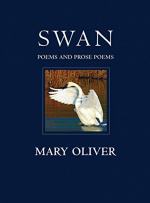|
This section contains 296 words (approx. 1 page at 400 words per page) |

|
The Swan Summary & Study Guide Description
The Swan Summary & Study Guide includes comprehensive information and analysis to help you understand the book. This study guide contains the following sections:
This detailed literature summary also contains Quotes and a Free Quiz on The Swan by Mary Oliver.
The version of the poem referenced throughout this study guide comes from: Oliver, Mary “The Swan,” Poetry Seers, https://www.poetseers.org/contemporary-poets/mary-oliver/mary-oliver-poems/the-swan/.
Note that all parenthetical citations within the guide refer to the lines of the poem from which the quotations are taken.
Mary Oliver was born in 1935 and grew up in semi-rural Maple Heights, just outside of Cleveland, Ohio. While she was young, Oliver spent much of her time in her neighborhood reading and going on walks. In addition to enjoying the sublimity of nature, Oliver also claimed in a 2011 interview that it was reprieve from a dysfunctional family, as well as childhood sexual abuse that left her with recurring nightmares. Oliver’s upbringing within nature had a profound impact on Oliver’s poetry for the rest of her life – even in adulthood, much of it drew from observations of the natural world during her walks after she later moved to Provincetown in the 1960s. In fact, Oliver would go on these walks with a hand-sewn notebook for recording her inspirations as they occurred to her during her walks. Oliver’s nature-oriented poetry was influenced by the Transcendentalists, Whitman and Thoreau, and her poetry’s intimate immersion in nature has led to comparisons to the work of Emily Dickinson.
Like much of her other poetry, “The Swan” falls into Oliver’s nature-writing tradition. Notably though, while the speaker favors the calm of the natural world over the bustling social world, her preference for nature is not misanthropic – she is not completely cut off from the human world. In fact, much of the joy and revelation she expresses towards the swan emerges from the intimate wonder she shares with the second-person “you” that she addresses throughout her poem.
Read more from the Study Guide
|
This section contains 296 words (approx. 1 page at 400 words per page) |

|



